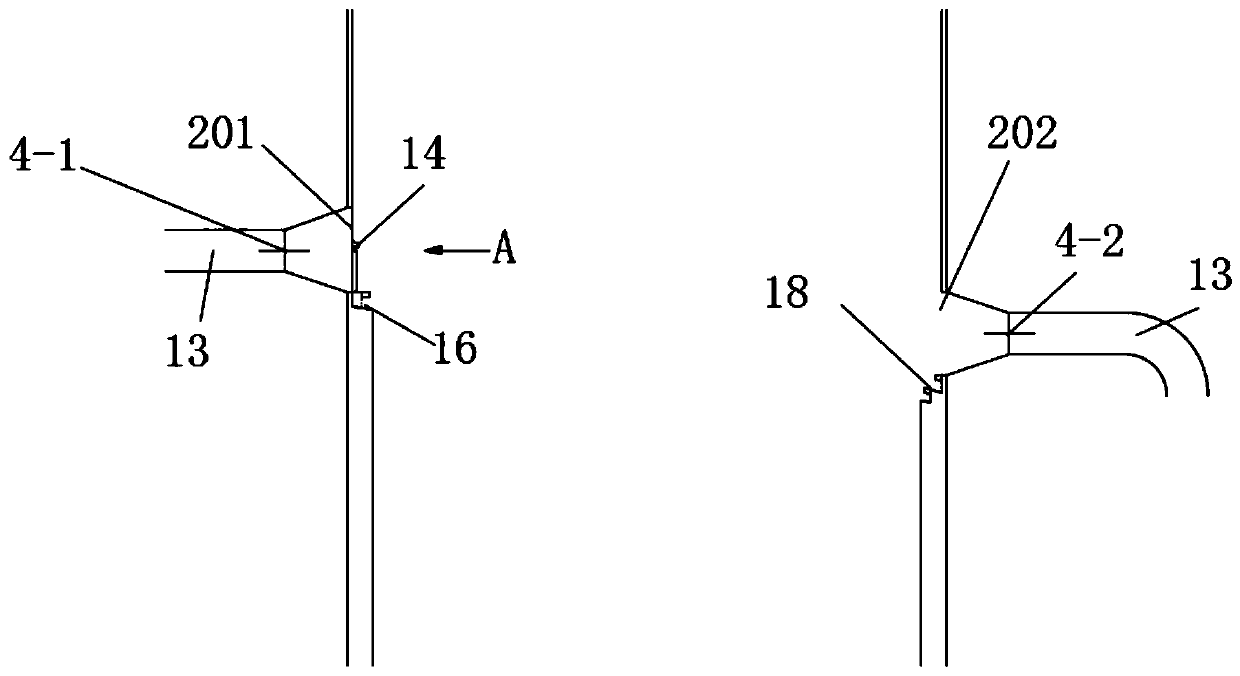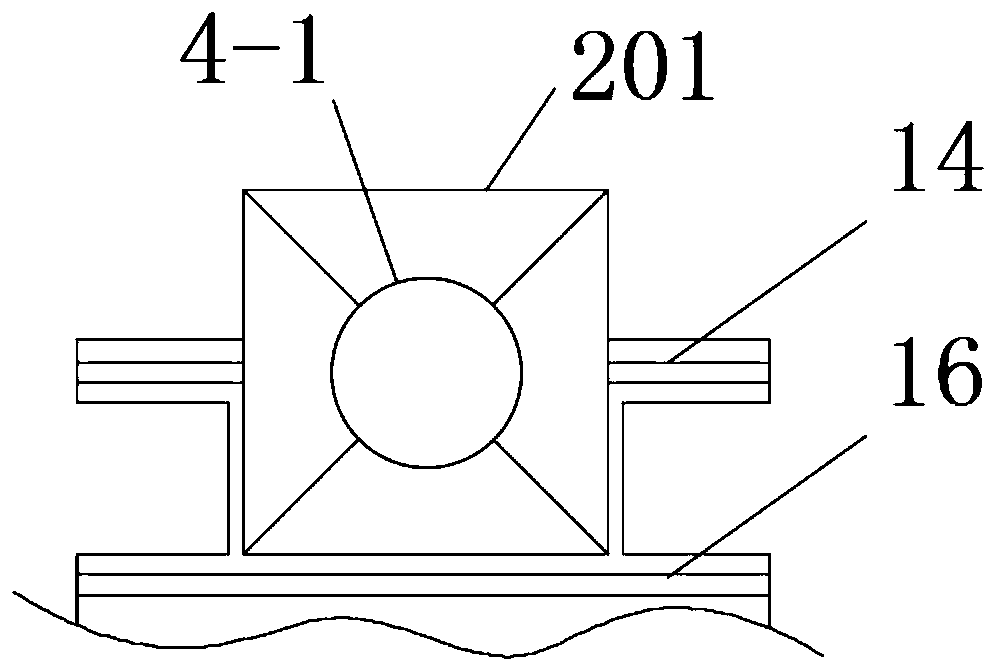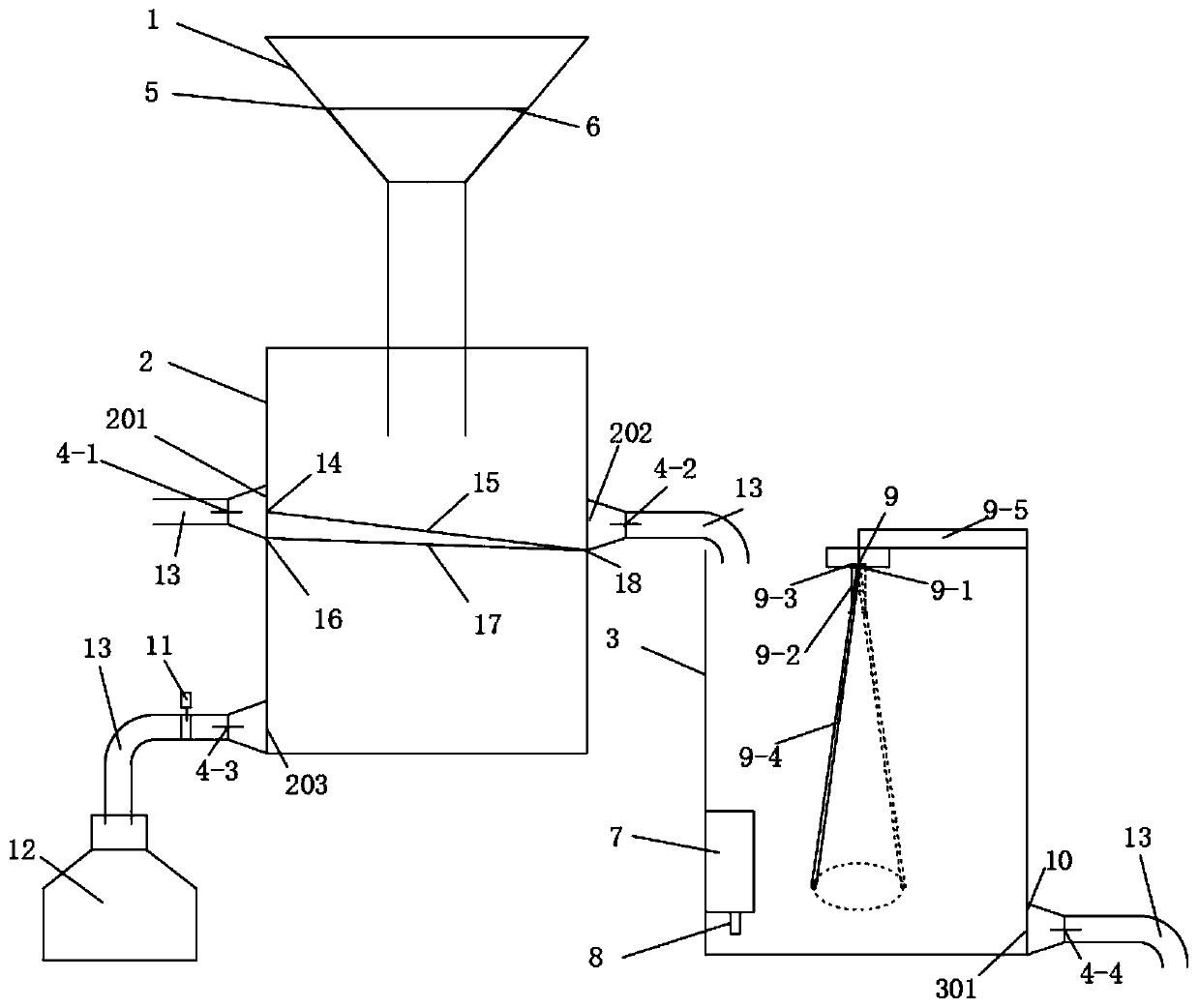Device and method for in situ nutrient adding experiment
A nutrient and experimental technology, applied in the direction of measuring devices, test sample preparation, material inspection products, etc., to achieve the effect of convenient regulation and chlorophyll concentration
- Summary
- Abstract
- Description
- Claims
- Application Information
AI Technical Summary
Problems solved by technology
Method used
Image
Examples
Embodiment 1
[0051] A device for in-situ nutrient addition experiments includes a sampling part 1, a phytoplankton separation box 2, a phytoplankton box 3, and a water body collection box 12. The conical part of the conical funnel of the sampling part 1 is 10cm high and has a maximum diameter of 15cm. The middle part is provided with a fourth slot 5 for installing the zooplankton net 6. The hole diameter is 0.20mm, the net diameter is 10cm, and the bottom diameter of the conical funnel is 5cm.
[0052] The phytoplankton separation box 2 is a plastic circular thick bucket with a diameter of 80cm and a height of 80cm. The two opposite sides of the phytoplankton separation box 2 are respectively provided with a water inlet 201, a first liquid outlet 202, a water inlet 201, and a first liquid outlet. The inlet 202 is provided with a water inlet valve 4-1 and a first liquid outlet valve 4-2. The water inlet 201 on the left is located 1 / 3 away from the top of the phytoplankton separation box 2, sli...
Embodiment 2
[0060] The following experiments can be carried out using the device of Example 1.
[0061] The requirements of the experiment are: if the in-situ nutrient addition experiment is carried out in the same area, the initial chlorophyll a needs to be controlled to a certain concentration;
[0062] The experimental operation is as follows: if 4L of the separated water sample needs to be dispensed into the water collection tank 12, the quantitative volume on the flow meter 11 can be set to 4L. If it is necessary to control the chlorophyll a concentration in each water collection tank 12 (each 4L experimental water sample) used for culturing at 5 μg / L, the chlorophyll a concentration in the phytoplankton tank 3 can be controlled and adjusted to 5 mg / L. Add 4 mL of phytoplankton tank 3 to each water body collection tank 12 to adjust the concentration of liquid, so that the initial chlorophyll a concentration of each water body collection tank 12 can be consistent, and the phytoplankton com...
Embodiment 3
[0064] The following experiments can be carried out using the device of Example 1.
[0065] The requirements of the experiment are: if the in-situ nutrient addition experiment of water bodies in different regions is carried out, the water bodies in different regions need to be controlled as single-factor variables, and the initial algae species and concentration should be consistent;
[0066] The experiment operation is: the water bodies in different areas need to be controlled as single-factor variables, and other conditions remain the same. First, remove the zooplankton from the water bodies in the different areas to be tested in order, pass through the phytoplankton separation box 2, and collect the water bodies in different areas into the water body collection. In the box 12, for example, there are three parallel samples in each area, and the water samples from different areas are divided into the water collection box 12 every 20L. The quantitative volume on the flowmeter 11 can...
PUM
| Property | Measurement | Unit |
|---|---|---|
| diameter | aaaaa | aaaaa |
Abstract
Description
Claims
Application Information
 Login to View More
Login to View More - R&D
- Intellectual Property
- Life Sciences
- Materials
- Tech Scout
- Unparalleled Data Quality
- Higher Quality Content
- 60% Fewer Hallucinations
Browse by: Latest US Patents, China's latest patents, Technical Efficacy Thesaurus, Application Domain, Technology Topic, Popular Technical Reports.
© 2025 PatSnap. All rights reserved.Legal|Privacy policy|Modern Slavery Act Transparency Statement|Sitemap|About US| Contact US: help@patsnap.com



